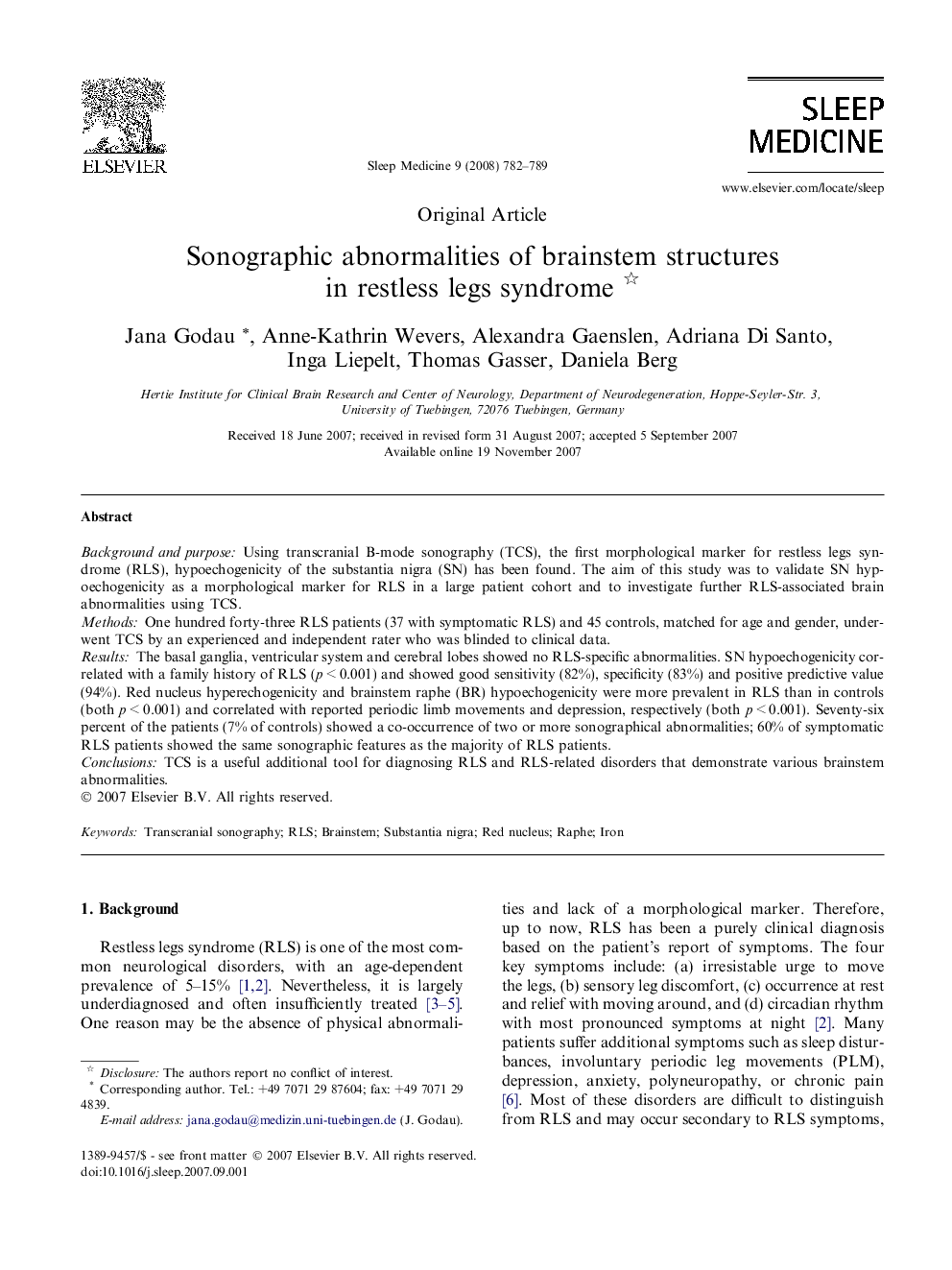| کد مقاله | کد نشریه | سال انتشار | مقاله انگلیسی | نسخه تمام متن |
|---|---|---|---|---|
| 3177317 | 1200296 | 2008 | 8 صفحه PDF | دانلود رایگان |

Background and purposeUsing transcranial B-mode sonography (TCS), the first morphological marker for restless legs syndrome (RLS), hypoechogenicity of the substantia nigra (SN) has been found. The aim of this study was to validate SN hypoechogenicity as a morphological marker for RLS in a large patient cohort and to investigate further RLS-associated brain abnormalities using TCS.MethodsOne hundred forty-three RLS patients (37 with symptomatic RLS) and 45 controls, matched for age and gender, underwent TCS by an experienced and independent rater who was blinded to clinical data.ResultsThe basal ganglia, ventricular system and cerebral lobes showed no RLS-specific abnormalities. SN hypoechogenicity correlated with a family history of RLS (p < 0.001) and showed good sensitivity (82%), specificity (83%) and positive predictive value (94%). Red nucleus hyperechogenicity and brainstem raphe (BR) hypoechogenicity were more prevalent in RLS than in controls (both p < 0.001) and correlated with reported periodic limb movements and depression, respectively (both p < 0.001). Seventy-six percent of the patients (7% of controls) showed a co-occurrence of two or more sonographical abnormalities; 60% of symptomatic RLS patients showed the same sonographic features as the majority of RLS patients.ConclusionsTCS is a useful additional tool for diagnosing RLS and RLS-related disorders that demonstrate various brainstem abnormalities.
Journal: Sleep Medicine - Volume 9, Issue 7, October 2008, Pages 782–789